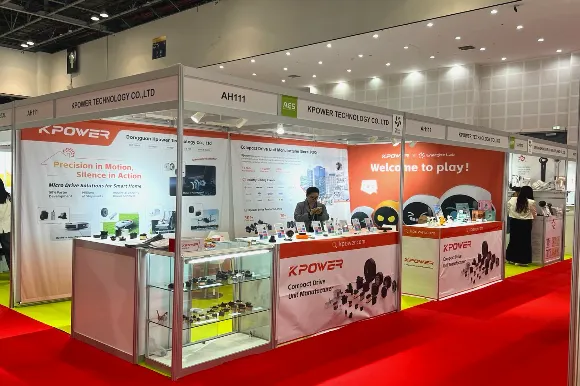Breaking Free from Arduino: Exploring New Ways to Run a Servo Motor
In the world of electronics and robotics, servo motors are like the muscles that bring your projects to life—precise, reliable, and versatile. They're essential for robotic arms, RC vehicles, camera gimbals, and a host of automation applications. Traditionally, many hobbyists and developers turn to Arduino boards for controlling these motors, thanks to their simplicity and vast community support. But what if you're looking to go beyond Arduino, perhaps to reduce costs, improve efficiency, or explore alternative control methods?

This guide will walk you through how to run a servo motor without Arduino, introducing you to different control strategies and hardware components. Whether you're an experienced engineer or a curious hobbyist, these techniques can open up new avenues for your projects.
Why Control a Servo Motor Without Arduino?
Before diving into the technical aspects, let's understand the motivations for controlling a servo motor without Arduino:
Cost Reduction: Avoiding microcontrollers like Arduino can cut costs, especially in large-scale or commercial projects. Simpler Control Systems: Sometimes, direct control via dedicated hardware can be more reliable and responsive. Learning Experience: Exploring alternative control methods deepens your understanding of electronics and motor dynamics. Customization and Flexibility: Enables integration with other systems or custom hardware tailored for specific needs.
Core Components for Non-Arduino Servo Control
At the heart of any servo control system lies the need to generate Pulse Width Modulated (PWM) signals, which convey position commands to the servo. When bypassing Arduino, key components include:
Microcontrollers or Dedicated ICs: Such as 555 timer ICs, motor drivers, or specialized servo controllers. Power Supply: Proper voltage and current regulation for your servo motor. Signal Generator: Hardware that produces the required PWM signals. Wiring and Connectors: For connecting the control signals to the servo.
Using the 555 Timer IC as a PWM Signal Generator
One of the classic approaches involves employing a 555 timer IC to generate PWM signals necessary for servo operation. Here’s a step-by-step overview:
1. Understanding the 555 Timer: The 555 timer is a versatile integrated circuit capable of functioning in astable (oscillator) mode to produce a continuous PWM waveform. By adjusting the resistor and capacitor values, you can control the pulse width, thus changing the servo position.
2. Building the Circuit:
Connect the 555 timer in astable mode. Use variable resistors or potentiometers to control the duty cycle, adjusting the pulse width dynamically. Connect the output pin (pin 3) to the servo motor's control wire.
3. Power Considerations:
The 555 timer typically operates at 5V to 15V, so ensure that your servo's voltage requirements are met. The timer should be powered with a separate, stable power supply if your servo demands higher currents.
4. Calibration and Testing:
Use an oscilloscope or a multimeter with a duty cycle measurement function to verify the PWM signal. Adjust the duty cycle within the 1ms to 2ms pulse width range for standard servos, corresponding to full rotation in either direction.
This method simplifies control without needing a microcontroller, suitable for basic positioning tasks or as part of more complex systems.
Using Transistor or MOSFET Circuits for Signal Modulation
An alternative to the 555 timer approach involves utilizing transistors or MOSFETs in conjunction with a square wave generator, such as a function generator or a simple oscillator, to produce the PWM signals.
1. Square Wave Generators:
Use a transistor or transistor array to switch power on and off at a specific frequency. Modulate the ON and OFF times to adjust the duty cycle.
2. Digital Logic ICs:
Consider using logic gates or flip-flops for creating periodic square waves. Combine these with RC timing circuits to produce adjustable pulse widths.
3. External Modules:
Modules like IR remote control chips or radio-frequency (RF) transmitters can generate control signals that can be adapted for PWM output.
Controlling the Servo with Analog Circuitry
For more analog-based control, potentiometers, resistors, and capacitors can generate variable voltage levels or timing signals.
1. Potentiometer-Based Control:
Use a potentiometer connected to an op-amp comparator or a voltage-to-PWM converter circuit. Adjust the potentiometer to change the voltage level, which in turn adjusts the servo's position.
2. Using DACs (Digital-to-Analog Converters):
If you have a DAC, you can generate precise voltage levels that correspond to specific servo angles. Feed these voltage levels directly into the servo's control line, if compatible.
Practical Considerations
While these methods can be effective for simple applications, they come with some caveats:
Precision and Stability: Analog signals can drift, so calibration is necessary. Power Handling: Servos can draw high current; ensure your power supply and wiring can handle the load. Signal Compatibility: Confirm that your generated PWM signals meet the timing specifications of your servo. Safety: Always power the servo separately from control circuitry to prevent damage.
Real-World Applications
Controlling a servo without Arduino opens doors to various applications:
Robotics: Using dedicated timers and switches to control joints. Home Automation: Motorized curtains or blinds triggered by simple switches. Wearable Devices: Compact control modules for haptic feedback. Educational Projects: Learning about PWM, analog circuits, and motor control fundamentals.
At this point, you’ve learned several foundational methods for controlling servo motors without relying on Arduino. Next, in part 2, we’ll delve into advanced control techniques, microcontroller alternatives, and detailed wiring diagrams to bring your project ideas to fruition. Stay tuned for a deeper dive into practical implementations and troubleshooting tips.
End of Part 1
Established in 2005, Kpower has been dedicated to a professional compact motion unit manufacturer, headquartered in Dongguan, Guangdong Province, China.




































